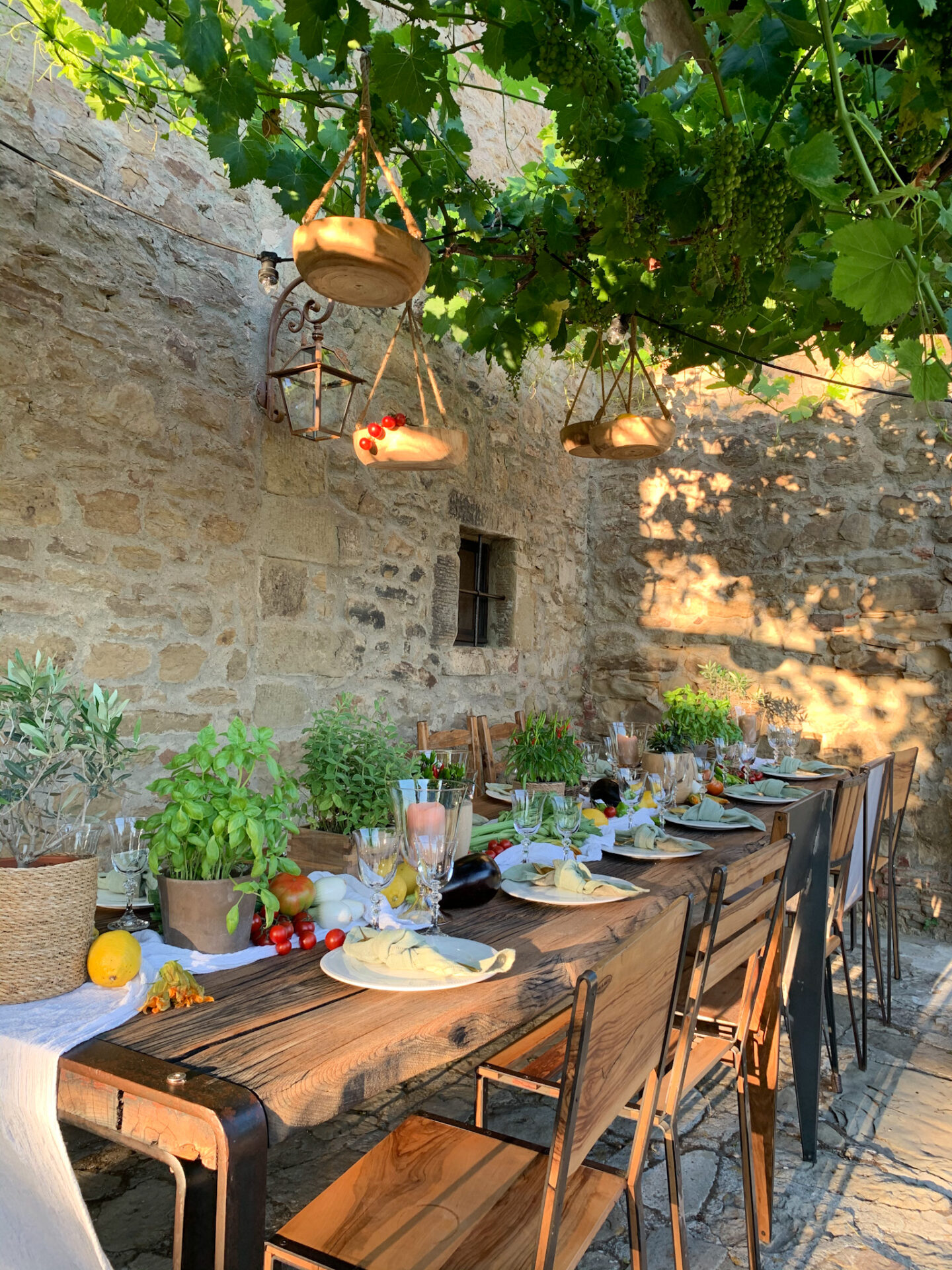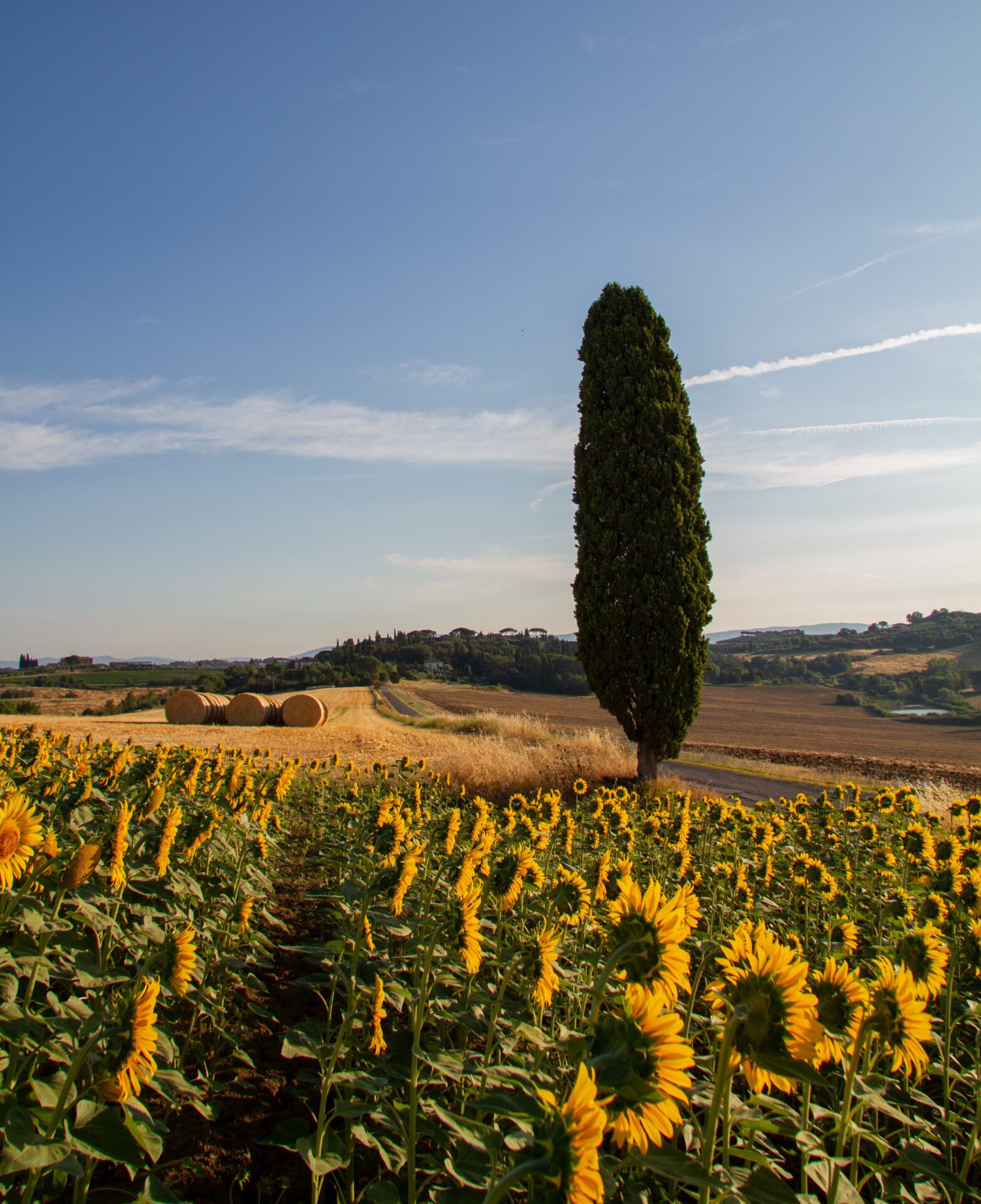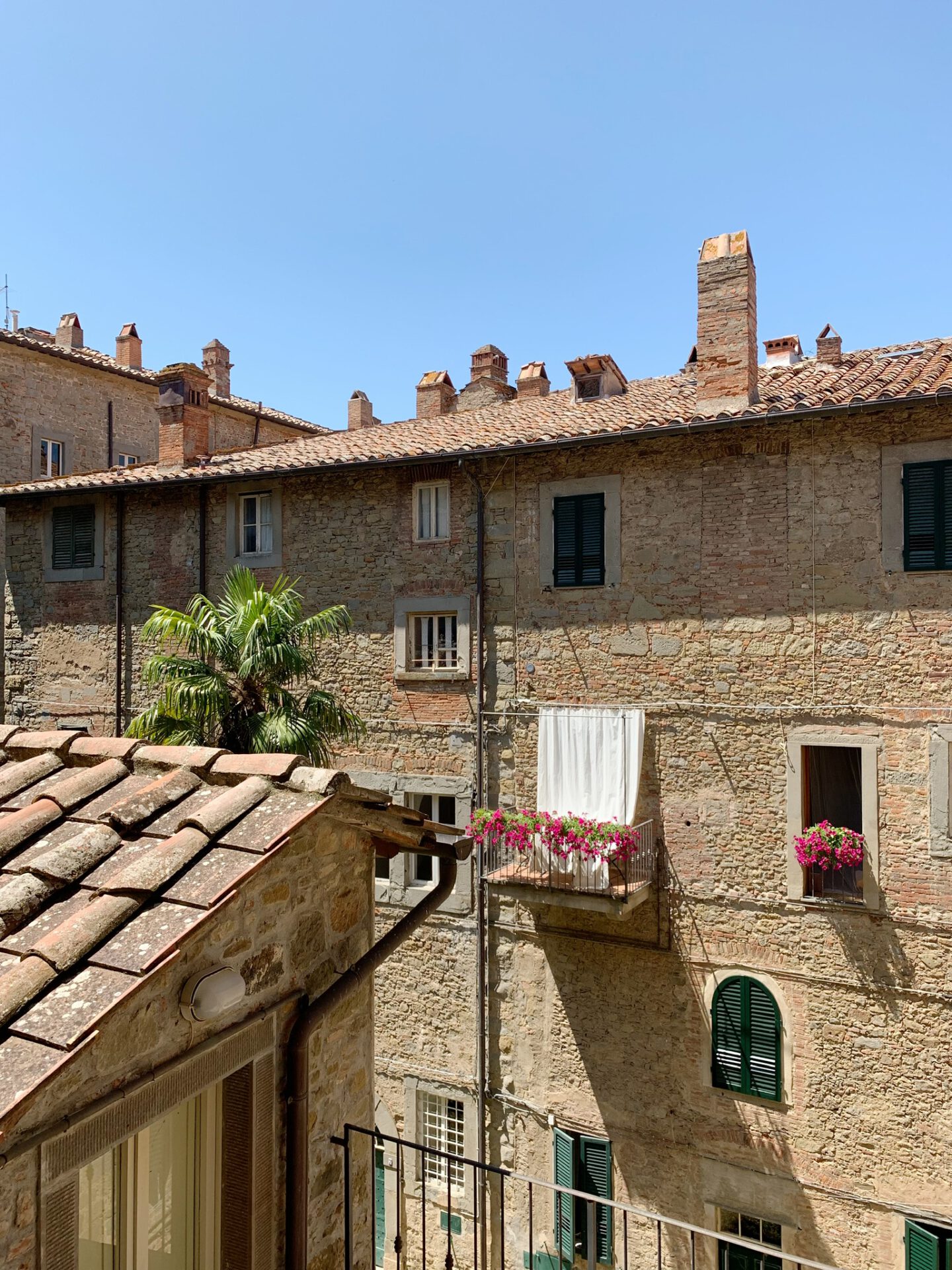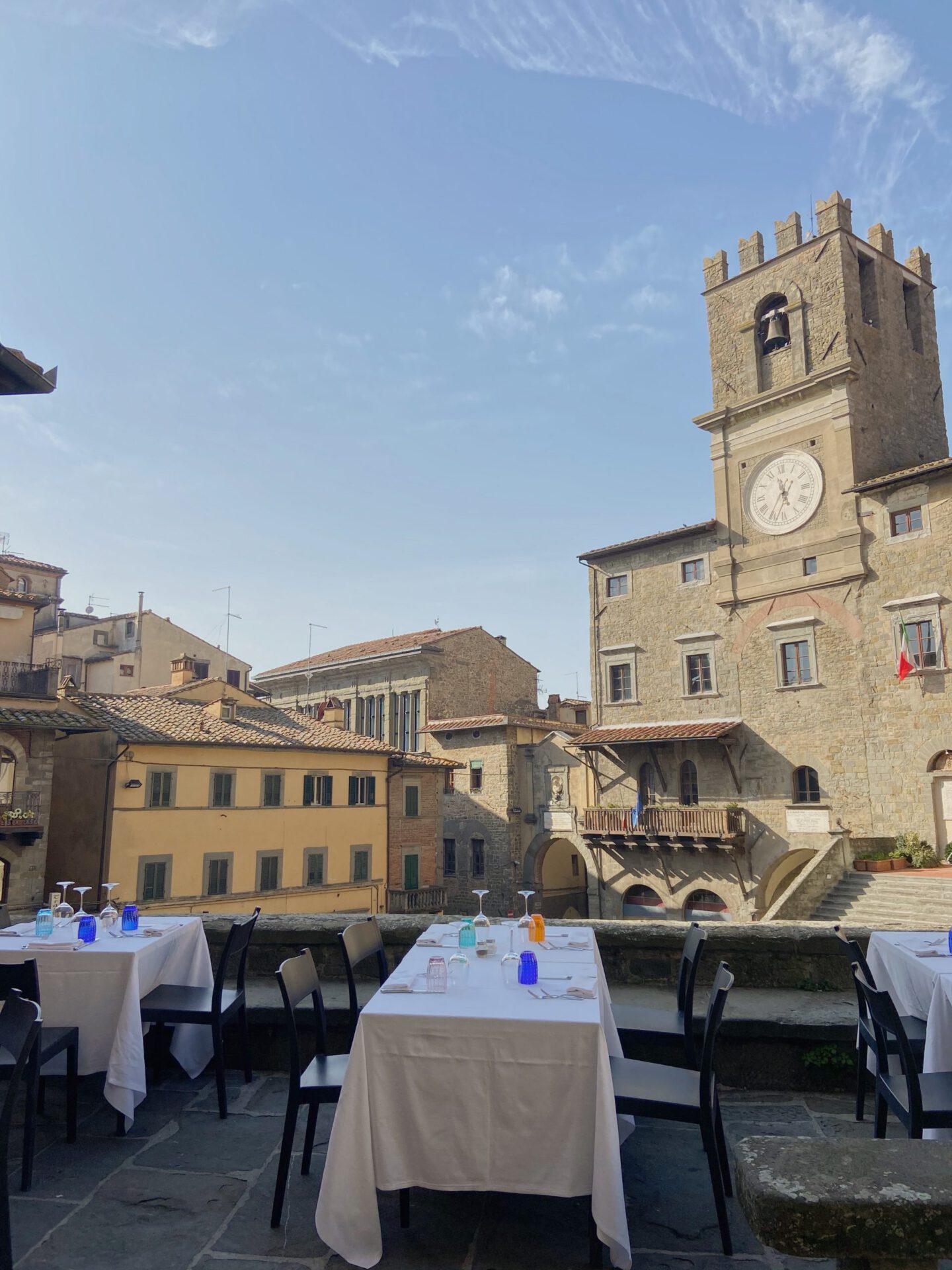I was born “under the Tuscan sun”. The town that captured the hearts of thousands of Americans in the memoir and charming (albeit cheesy) Walt Disney Film titled with this evocative phrase was just my home; my formative childhood years were spent scampering amongst the hilly alleyways and peeking out of the stone walls of that small Etruscan village overlooking the Valdichiana. But, in a way, I learned to live and love in Cortona in a similar way as Frances Mayes. Whether for its natural beauty, Chianina steak, Tuscan charm, or the genuine hospitality of its inhabitants, the town really knows how to make you fall in love. Located on the border of Siena and Umbria in the province of Arezzo, its broad, tranquil panorama extends over the entire Valdichiana as far as Lake Trasimeno, capturing that quintessential, rolling-hills Tuscan view.
The hilltop town sits at 600 meters (around 2,000 feet) above sea level. Characterized by narrow alleyways, varying levels of piazze, and elegant Renaissance buildings, churches, and shrines, the architecture and daily life of the village all point to the town’s rich past. There’s only one flat alley in the city: Via Nazionale, called “Rugapiana” (a melding of the words for “wrinkle” and “flat”) by the inhabitants, acts as a main street and is home to many lively coffee bars and artisan shops. As early as the 1500s, it was considered the town’s aristocratic heart and today remains the center of the town’s social life.
Mayes isn’t the only one writing about Cortona’s beauty, for even Virgil mentioned it in the Aeneid and the town appears in many ancient legends. Dardano, a valiant Etruscan warrior, is said to have left Cortona to found the ancient city of Troy, from which Aeneas fled to found Rome after the famous war. My nonno taught me the famous saying: “Cortona, mother of Troy and grandmother of Rome.”
There’s a large expat community in Cortona, but it’s still managed to preserve the authenticity of local life. The festive atmosphere on Saturday morning at the market remains unchanged as the years go by; sometimes, I feel as if I were still a child shopping with my mother. I learned to love Cortona precisely for this authenticity, one that time seems to never erase.
Here’s how to spend the day falling in love with Cortona. Scroll down for some additional recommendations for hotels, restaurants, bars, and activities to get the best of this small Etruscan village.
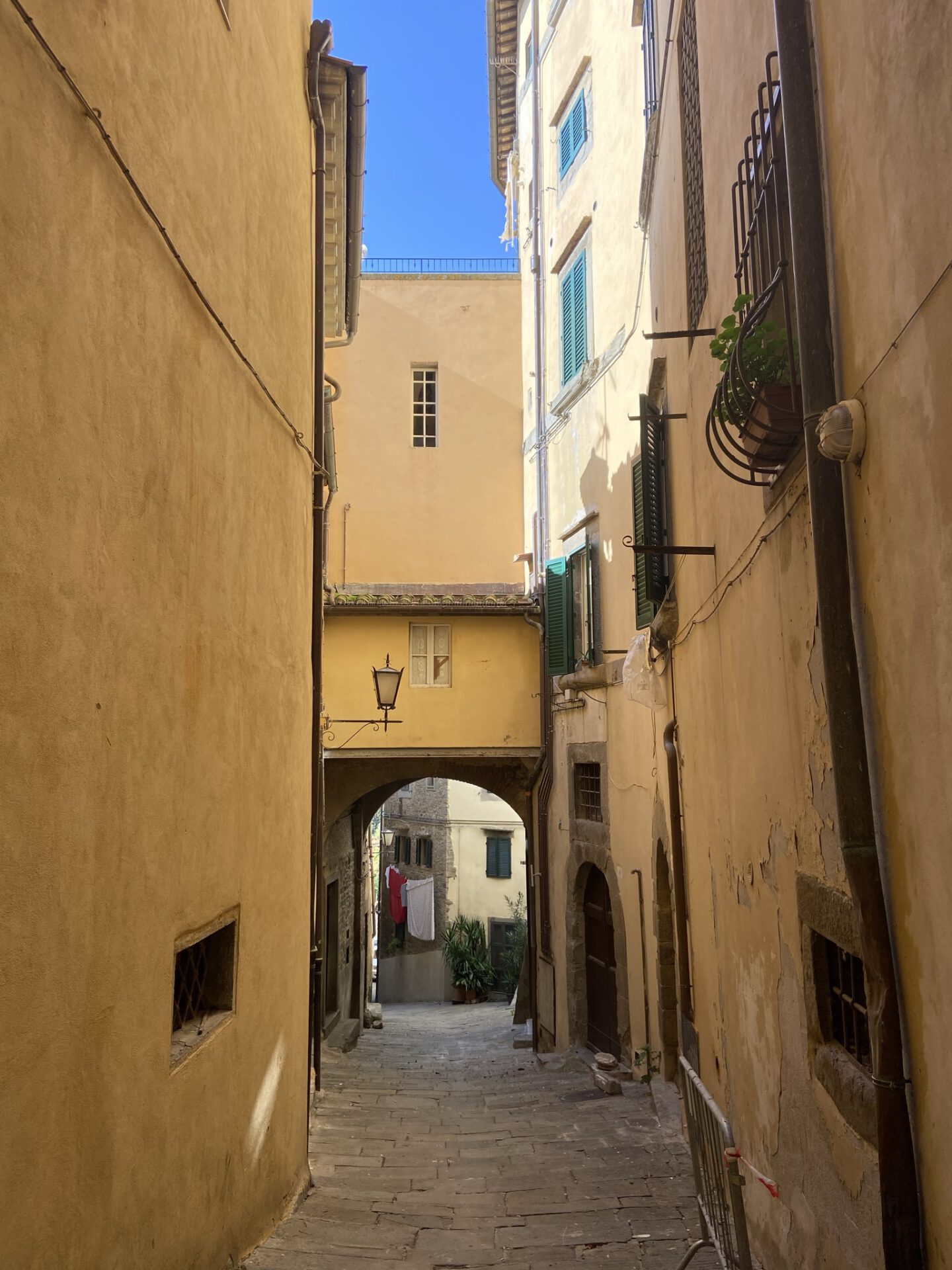
24 HOURS IN CORTONA
MORNING
Pick one of the town’s many piazze to sip a caffè in, accompanied by a moringa con panna from Pasticceria Banchelli. The two main squares, Piazza del Comune and Piazza Signorelli, are the beating heart of the village, and you’ll join many inhabitants gathering to chat, shop, or read a newspaper outside one of the many bars. Visit the Etruscan Museum in Palazzo Casali to see relics from the ancient Etruscan civilization that tell of the history of the city. Don’t miss my favorite: the bronze chandelier dating back from the fifth century AD. After the museum, visit the Basilica of Santa Margherita da Cortona and the fifth century BC Fortress of Girifalco. For a bit of restoration, take a stop by the stunningly silent Franciscan monastery Le Celle Hermitage, built into the slope of the hill.
MIDDAY
For lunch, treat yourself to the highlights of traditional Tuscan cuisine at one of the many spots dotted through town. Cortona’s specialties include Chianina steak, crostini con fegatini, and ribollita, obviously all while sipping a good Valdichiana wine.
In the afternoon, take the car and get lost in the countryside. Visit the small Umbrian villages on the border with Tuscany: Castiglion del Lago, Monte del Lago, and Passignano sul Trasimeno. Alternatively, take a leisurely hike through the countryside, winding up and around the curves of the Tuscan landscape.
Make sure to make it back to Cortona in time for sunset. For aperitivo, enjoy a nice glass of Tuscan wine accompanied by the famous ciaccia dell’Imola (a typical cucina povera bread from the peasant era filled with cold cuts) at the Enotria wine shop or a cocktail sitting at one of the outdoor the tables of the Caffè Tuscher along the bustling Via Nazionale.
NIGHT
Take a stroll through the picturesque alleys, enjoying the golden view of the valley from each turn as the evening light fades. You’ll find many typical Tuscan trattorias, taverns, and restaurants during your walk. Loggetta Cortona is located in an ancient palace from the 13th century. During the warmer months, you can eat outside in the beautiful medieval loggia that overlooks Piazza della Repubblica. Osteria del Teatro offers a perfect mix of elegance and tradition for you to enjoy an excellent Tuscan meal thanks to the skill and experience of chef Emiliano Rossi.
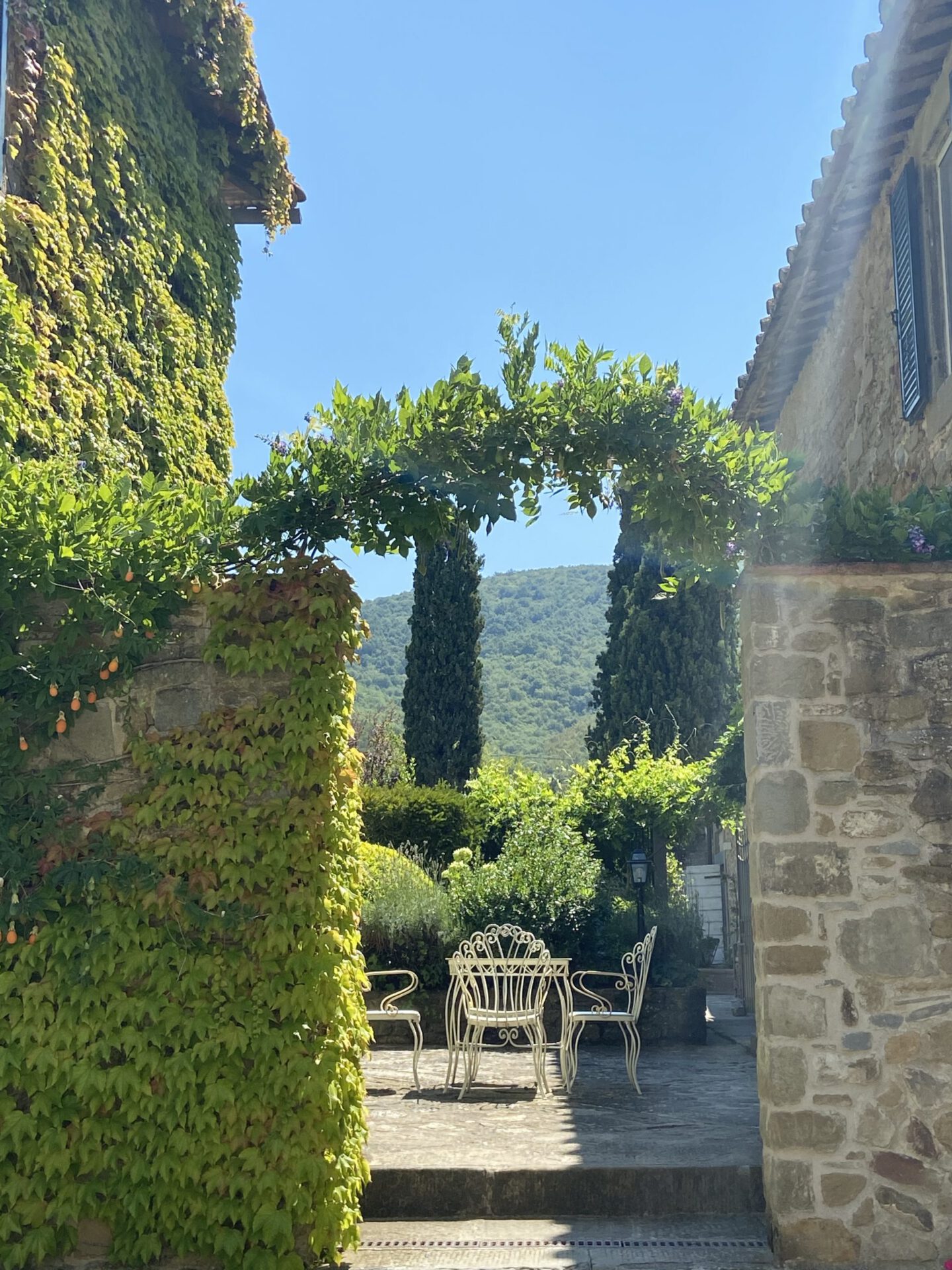
THE BEST OF CORTONA
SLEEP
Villa di Piazzano – A period residence dating back to the Renaissance. Warm and inviting, the country house has an outdoor restaurant overlooking a stunning pool, and the sofas in their large garden give one of the best sunset views in Cortona.
Villa Montanare – Built in 1640, the stone farmhouse Villa Montanare is perched on a hill overlooking a breathtaking panoramic view over the Val d’Esse and Val di Chiana Valley. Owned by wedding planner, designer, and stylist Silke and her husband Andreas, the house is surrounded by a paradisiac variety of olives, cypresses, pines, figs, fruit trees, rosemary bushes, lavender, and stone walls. There are two charming suites with stunning views overlooking the Tuscan hills, garden access, a small rustic Tuscan kitchen, and beautiful swimming pool.
Monastero di Cortona – This hotel is located in the highest part of the historic center. Each window boasts breathtaking views over the roofs of the town. The building was a convent until 1976, and its original religious structure is still visible in the interior layout: beamed and vaulted ceilings and frescoes that have been recovered and restored. The oldest area of the hotel houses a spa with an indoor pool, and the central outdoor space features a garden and an outdoor pool.
Villa Cozzano – A family agriturismo producing their own extra virgin olive oil and red wine. It’s the perfect place to experience the country life of both Umbria and Tuscany.
EAT
Beerbone – This informal spot has creative burgers featuring Chianina meat and Cinta Senese from the area. It’s located right off the busy Via Nazionale and is a must for a quick lunch or dinner.
Bucaccia – Set in a 13th-century mansion, this restaurant uses local ingredients to craft the traditional highlights of Tuscan.
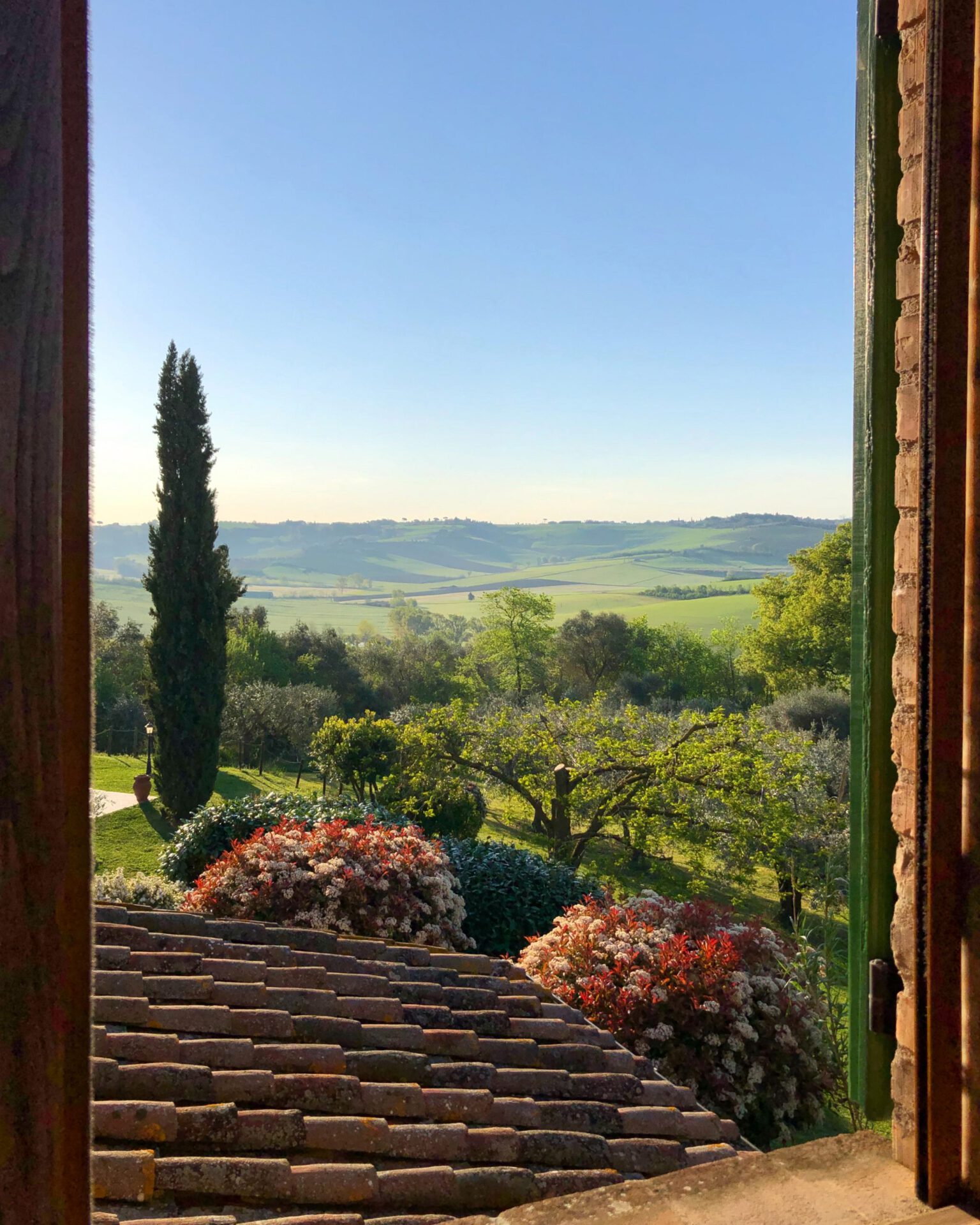
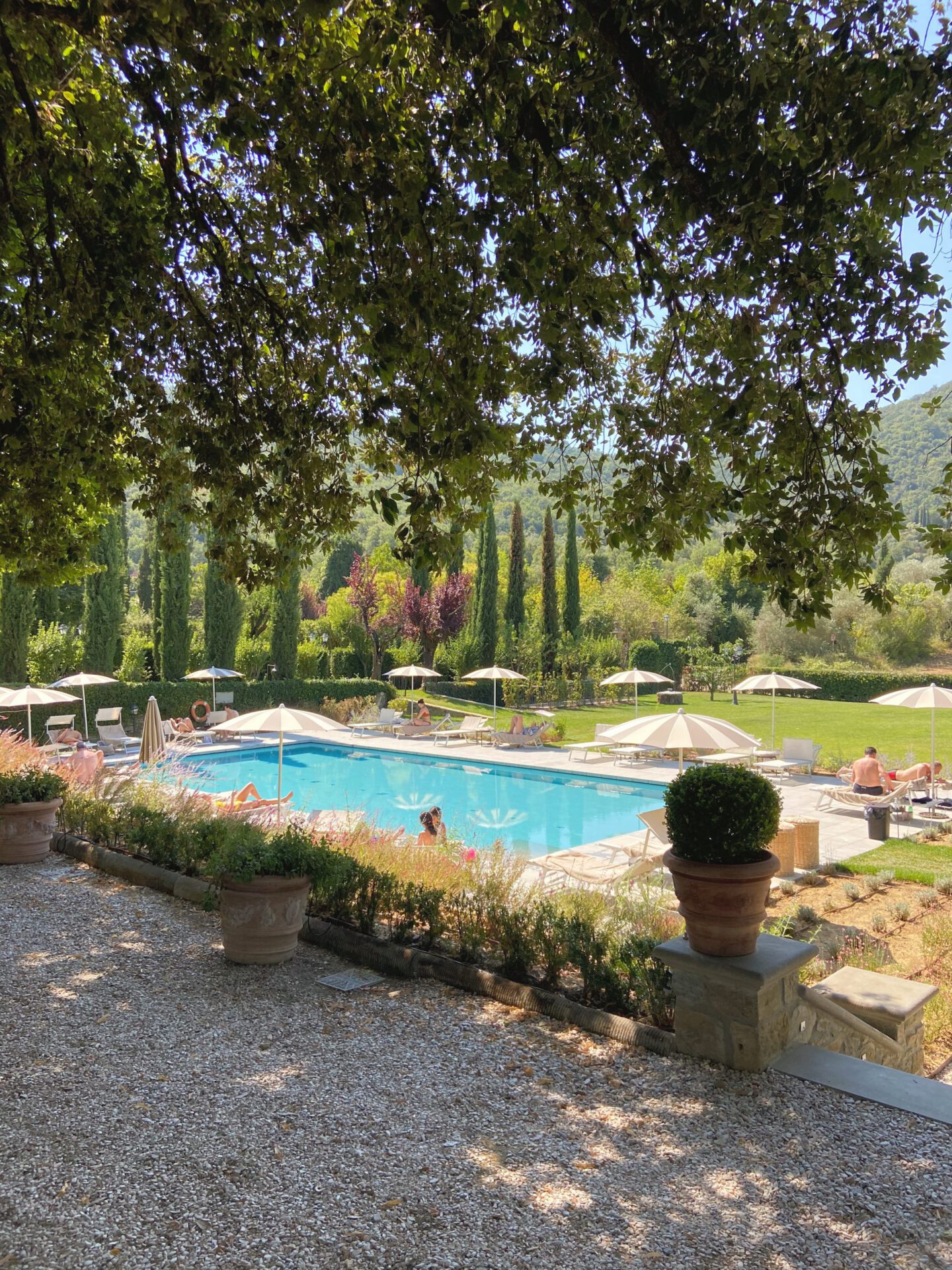
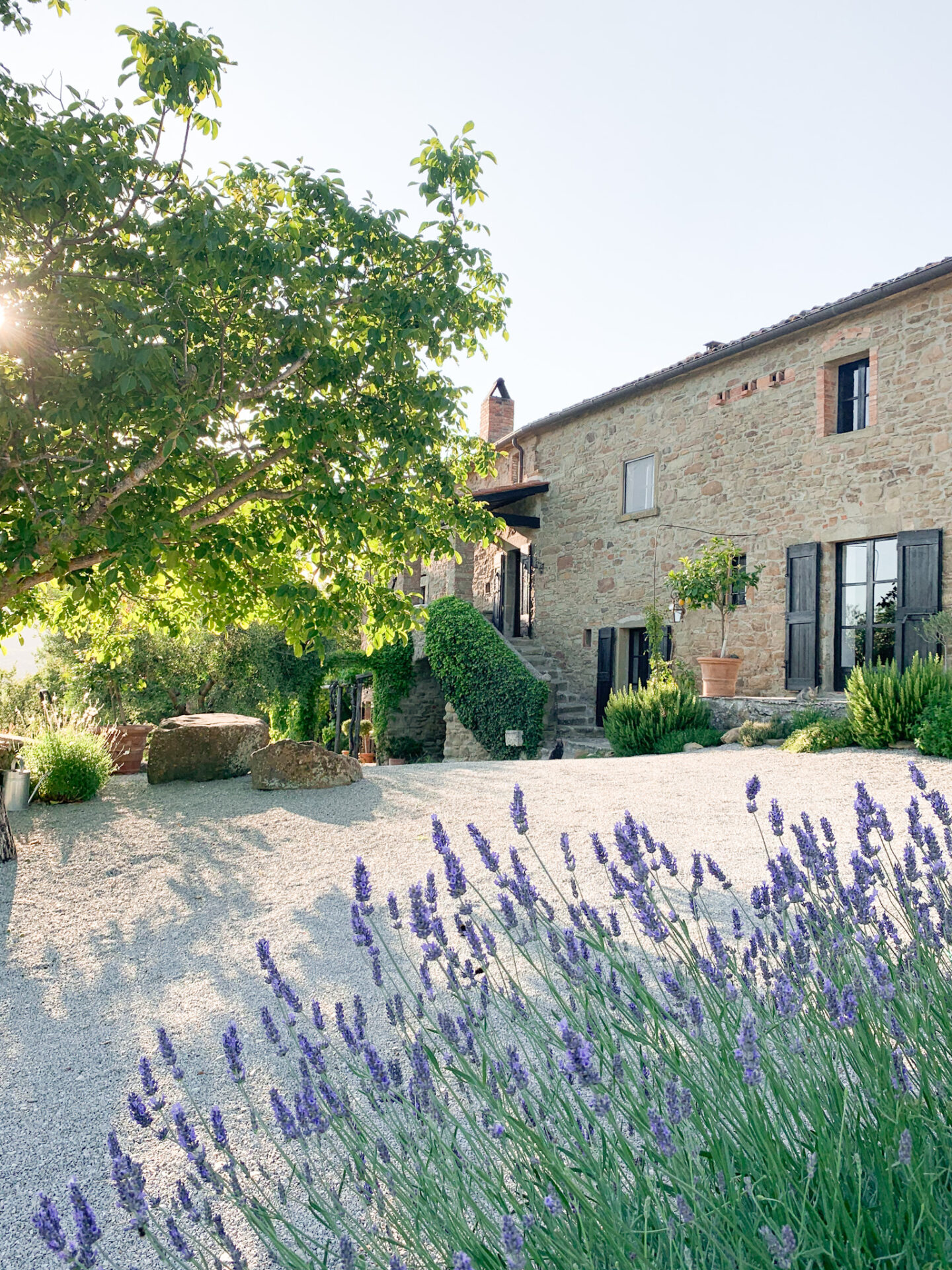

SHOP
Castellani 1919 – Opened in 1919 by Elim Castellani, this adorable shop on Via Nazionale has unparalleled antique and vintage options, sourced by current owner Paolo Castellani who has worked in the international art market.
Antonio Massarutto Sculpture – This shop features the handiwork of designer and sculptor Antonio Massarutto. He crafts one-of-a-kind animals made with mixed techniques and materials and jewelry inspired by the natural landscape, from his “Olive” to his “Etruscan” lines.
L’Antico Cocciaio – This beautiful shop features only handmade and hand painted ceramics for your kitchen or decor, and you can also take clay and painting workshops.
Plumeria Home – This made-in-Italy shop has everything to outfit your home with color, style, and a touch of Italy. It’s a must visit if for nothing else than to see the pretty designs.
DRINK
Fabrizio Dionisio, farm “Il Castagno” – Right outside of Cortona, take a tour of this family-owned winery and visit their vineyards, olive groves, and farm. Their wines are mostly syrah, and all of the reds and rose–particularly the “castagno”–are amazing.
Tenimenti D’Alessandro – Aside from making some of the best Syrah in the region, this winery is gorgeous, boasting both a resort and a Michelin-starred restaurant. Be sure to reserve a tasting in advance.
DO
Cortona On the Move – This international festival of contemporary photography takes place every year from July to November. The exhibitions are hosted in a series of historic buildings throughout the historic center, which are usually closed to the public, so it’s the perfect time to explore places in the city you normally wouldn’t get to.
Cortona Antiquaria – Every August, Cortona hosts this huge international antique show; it’s one of the oldest in Italy and every antiquer’s dreamland.

